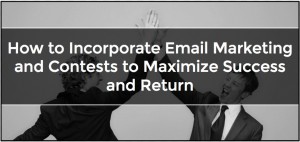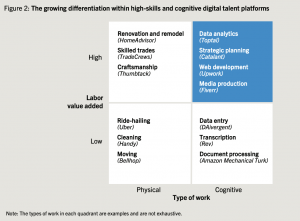If you’ve recently decided to launch an e-commerce website, it’s imperative that you first understand the enormity of this undertaking. Although software companies would have you believe the online selling process can be turnkey, the smartest online merchants know there are millions of minor factors that go into building a successful website. Every decision you make—including the partners you choose, the website’s design, the metrics you track, and the ways you market your website—needs to be scrutinized to ensure optimal website performance.
To help simplify the online selling process, we’ve created this primer featuring an abundance of insights about what you should consider, why you should consider it, and how to make sure everything works according to plan. As you go through this list, keep in mind that no one article about e-commerce can possibly contain all of the information you’ll need to build an almost-perfect website. However, what we’ve created for you here is a basic outline of the most important aspects you’ll want to consider before your website goes live. Good luck!
Choosing a Partner

The best e-commerce software providers help you track and manage inventory, fulfill and ship orders, maintain a product database, track sales, market to customers, maintain a loyalty program, use offline channels to sell, and even run a blog. These tools essentially pull in the various elements that automate, digitize, and track how and when products are sold on your website.
Tools like Shopify and PinnacleCart provide comprehensive solutions that let you edit your site. They can also facilitate connections with third-party software solutions like email marketing and customer relationship management (CRM) tools, all from within one dashboard.
In order to choose the right partner, focus on ease-of-use, scalability, cost, and third-party extensions. Those factors will be among the most important aspects of your day-to-day e-commerce website management. Once you’ve chosen a software partner, they’ll help guide you along the rest of the processes mentioned in this piece.
Web Hosting

Web hosting services store your website’s files on its servers and deliver them to your customers’ browsers. The best-in-class tools will help your website load quickly, stay secure, and seldom if ever go offline. Tools like GoDaddy Web Hosting are synonymous with solid uptime, reasonable rates, and excellent client support.
When choosing a web hosting provider, it’s important to research potential partners on websites like Cloud Spectator and Review Signal, where you can do things like compare uptime and reliability metrics. You’ll want to query their client services team to see how quickly and often they’ll respond to you, and you’ll want to ask about the company’s security policies in order to ensure that your data is protected. Your e-commerce software can also serve as a web hosting service, so be sure to ask each vendor if this is possible when selecting an e-commerce tool.
Website Design

How your website looks and feels will impact whether or not customers decide to stay on your website or shop on a competitor website. Design elements like sticky header navigation, hamburger menus, and parallax scrolling are just a few of the e-commerce design elements you’ll need to know to design a fantastic shopping experience.
In our article 9 Tips for Designing a Great Web Storefront, we list the most important features designed for desktop and mobile e-commerce. We provide examples of best-in-class websites and how they use each design element to enhance the shopping experience. If, after reading the article, you’re still confused about it all works, talk to your e-commerce software vendor. They’ll be able to explain what is possible, whether or not you should implement it on your website, and how it will impact sales.
Technological Know-How

It doesn’t take a rocket scientist to build an e-commerce website. That’s because most of the brainpower is provided by your e-commerce platform provider before you even start designing your website. However, it’s still important for you to understand the technological elements that should be monitored and tweaked in order to keep your website running optimally.
Does your website offer 256-bit Secure Sockets Layer (SSL) encryption? Does your webpage load in less than 100 milliseconds (ms)? Does your vendor consistently deliver new code to your website for performance improvements or new features? These are just a few of the technical aspects you’ll need to consider as you choose a vendor, and as your website grows.
Building an Audience

Content marketing, email marketing, and partnering with other websites are excellent ways to gradually build momentum for your website. Unfortunately, not everyone has the resources to dedicate to these tasks.
There are several surefire ways to market your new e-commerce website without having to spend a ton of time or money. These tactics are focused on quick wins that drive traffic to your website within the website’s first few weeks. Options like Facebook and Google ads, earned media, influencer endorsements, and even good old-fashioned in-person hustling will help you to generate proverbial foot traffic even as you’re still building out your inventory.
Payment Processing

Just because a consumer has gone through the browsing and selecting process on your website, it doesn’t mean he or she will actually make a purchase. In fact, up to 74.5 percent of shoppers abandon cart, according to SalesCycle data.
In order to guide users through the payment process, you’ll want to choose a vendor that can deliver seamless, secure, and intuitive checkout. What kinds of payments will you accept? How simple can you make your payments form? Is your website PCI Compliant? You’ll need to consider these factors and more when choosing a payment processing partner.
E-FulFillment

What good is luring customers to your website if the products they purchase are never delivered? E-Fulfillment companies help manage inventory availability, packing, shipping, and handling returns, among many other things. In order to choose the right fulfillment partner, you should consider aspects like flexibility and pricing, storage capacity and fees, scalability, and process automation.
Companies like eFulfillment Service (EFS) integrates with online shopping cart platforms to help communicate data from the website to the warehouse to the customer and back to you. Choosing an e-fulfillment partner can be quite daunting, especially if you’ve never gone through the process. Speak with your intended e-commerce software company about the companies with which they partner and which they think will provide the most seamless integration.
Website Performance

Image via OneUpWeb
Once you’re up and running, take some time to evaluate your efforts. Has your website been successful? What needs to be improved? How easily customers are making their way through your website architecture? Conversion Rate is the most important statistic to measure when trying to determine how effective your website is at driving sales. Conversion Rate math is simple: What percentage of website visitors actually purchase a product? Bounce rate is another important one. Bounce rate is measured as the percentage of visitors who leave your website without clicking into a second page. For every 100 website visitors, 64 should navigate to a second page.
These are the metrics you should track to measure website performance, but it doesn’t stop there. Your software partner should be able to help you monitor all of these metrics, and clue you into additional metrics that provide insight into your website’s performance. Use these numbers to adjust and revamp as your website requires.
The Holiday Season

The holiday season is the biggest time of year for online merchants. Starting with Black Friday and Cyber Monday and stretching through New Year’s Day, you’re likely to experience your largest volume of website traffic. In order to ensure that you’re prepared to capitalize on this coming rush, you’ll need to generate a list of holiday survival procedures to follow. You’ll also want to incentivize as many consumers as possible by loading your e-commerce website with promotions and giveaways.
For example: ensure that your inventory is replenished, your promotions are ready to run, and that your web hosting service is ready to handle a sudden uptick in traffic. Once you’ve done those things, you’ll want to promote your website as much as possible, including tactics like social media contests, pay-per click advertising, an email blast, and maybe even free extras with every purchase. Once that’s all taken care of, grab some egg nog, sit by the fireplace, and pray that your website experiences no downtime whatsoever.
Digital & Social Articles on Business 2 Community(110)
Report Post






